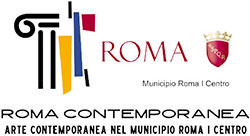Andrea Festa presents a group exhibition at Sala Nova titled Mirrors, bringing together works by Sinead Breslin, Tomas Harker, Emiliana Henriquez, Ania Hobson, Igor Moritz, Zofia Pałucha, Richard Phillips, Alexander Skats, Rafal Topolewski, and Xu Yang. The artists are united by the themes of reflection, identity, and perception. The exhibition explores how portraiture acts as a mirror—revealing both the self and the world around us—serving as a form of social documentation.
Historically, portraiture has been the stage upon which the individual negotiates visibility, presence, and identity. The European portrait tradition was dominated by aristocratic and bourgeois commissions, where self-presentation was inseparable from power. Yet behind those extravagant requests lay the projection of a personal narrative. The focus on the figure “in front of” has evolved today into a metaphysical and complex analysis of cultural memory and personal vision.
Mirrors investigates the reflective power of art—not only as a depiction of the external world but as a medium through which inner life and emotional complexity are documented. And, above all, each self. In this manifestation of oneness, Mirrors invites visitors to follow the gaze of the artworks, which engage in a vivid and dynamic dialogue with one another.
In Why Must You (2021), Sinead Breslin almost mimics that famous smile while softly gazing at her neighbor, Igor Moritz. The man, exhausted by the Heatwave over London, stares into the void—or perhaps notices something small in the corner of his Matisse-esque apartment.
In Tarantula by Tomas Harker, the spider becomes the painting’s central protagonist, resting on the face of a young woman who calmly observes the room. Isolde with Rocking Horse (2025) surprisingly studies the scene as an old grandfather looks at a child, embodying the contrast between curiosity and weariness of life. Between the two figures lies an empty, Marie Antoinette–like Mask.
The journey through surprising accessories continues with Xu Yang, whose white frame elegantly supports the multicultural chaplet designed by Zofia Pałucha—a bold and unapologetic celebration of self-expression and the joy of uniqueness.
The final wall begins with two bright, vivid works by Emiliana Henriquez: in the heat of orange tones, a woman gazes at the ceiling. The composition already hints at the exhibition’s meaning, as the viewer follows the gentle rises and falls from forehead to chin, neck to chest, and waist, reflected on the floor. Below, a blue double portrait captures a couple in a moment of intimacy.
The blue-orange pair stands beside Red Men by Ania Hobson; the two figures seem to hide, raking the street under the stern gaze of someone in the shadows. The final work presented is by Rafal Topolewski—a self-portrait defined by the expressive anatomy of steady eyes, a tense jawline, and a knife.


